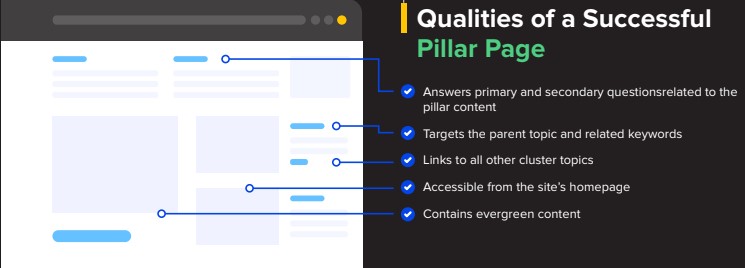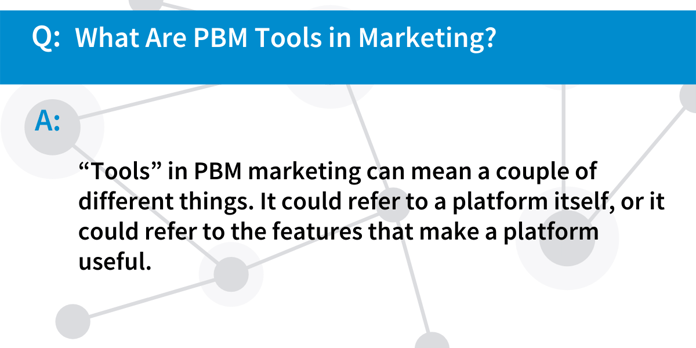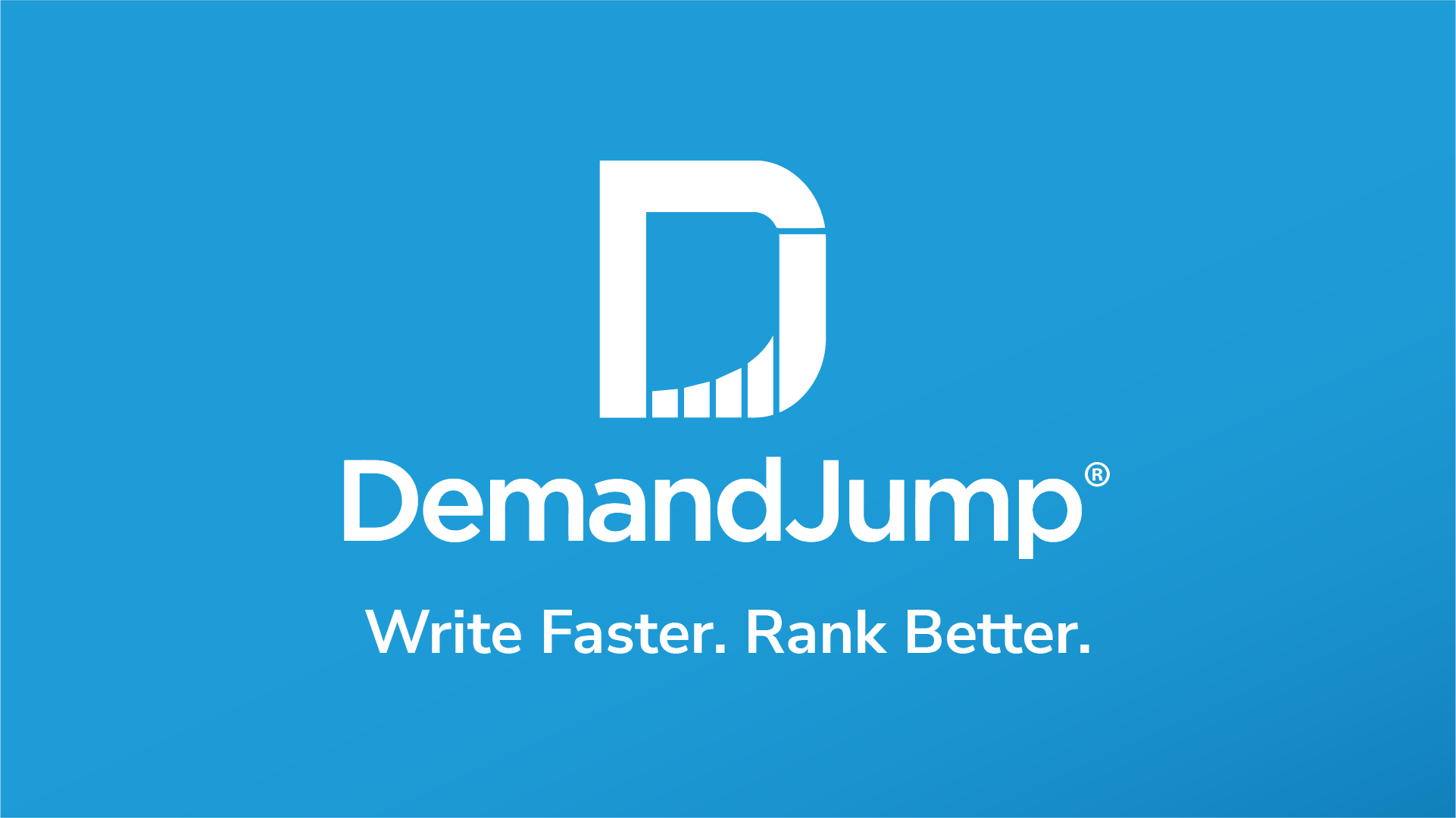If you work in marketing, you have probably heard the newfound buzz around Pillar-Based Marketing, or PBM for short. And if you haven’t heard much about PBM yet, you will, as it is quickly becoming one of the most effective forms of content marketing. How do we know, you ask? Because we invented it. But rest assured, PBM is more than some catchphrase, fad, or flash in the pan. It’s a concept we at DemandJump have spent years developing, using, refining, and ultimately perfecting. PBM is the reason you are on this page right now.
As industry leaders in the PBM field, we are passionate about educating others on Pillar-Based Marketing and spreading the excitement for all that comes with it. That includes covering things like:
- The best PBM platforms
- The best PBM tools
- How to create a successful PBM strategy
- And more!
We discuss all of those topics and more in the following blog. Let’s dive in!
What Is PBM in Digital Marketing?
PBM is a written content marketing strategy aimed at delivering content to a target audience using the exact topics and phrases they are searching for in Google. PBM takes topic networks (a.k.a. clusters of search queries) around a term you want to rank for and organizes them based on how often they are being searched. It also accounts for how connected each query is to one another. From there, a pillar strategy is developed to generate written content about everything in the topic cluster using the exact same keywords as your audience.

It’s important to thoroughly understand how content plays a role in Pillar-Based Marketing before you can really understand what to look for in a PBM platform. So without further ado let’s examine PBM content.
What Are The Types of PBM Content?
In a Pillar-Based Marketing strategy, there are three types of content:
- Pillars
- Sub-Pillars
- Supporting Blogs
While all three content types share some similarities, they also have a handful of key differences. Let’s break each one down in more detail.
Pillar
A pillar is a roughly 3000-word piece addressing the center of the topic cluster, i.e. the main phrase you want to rank for. Depending on what your company does, this could be anything from “Used Tractors” to “SaaS Marketing.” The point of the pillar is to write from a broad perspective on everything your topic encompasses. So, if your topic is “Used Tractors,” you would cover other nodes in the content cluster like:
- Used Tractors for Sale
- Best Used Tractors
- Who Should Buy a Used Tractor?
Whatever your topic is, it should be broad enough that writing 3000 words won’t be too much of a challenge but specific enough that you won’t need much more than that to effectively discuss it.
Generally speaking, the most effective pillar types fall into categories like:
- Resource pillars, which are the go-to source for any and all information related to your topic.
- Guide pillars, which go through frequently asked questions and their solutions relating to your pillar topic.
- What-is? pillars, which answers what is… questions with an in-depth and informative approach.
- How-to pillars, which provides a step-by-step process for how to do something.
Other considerations or tips about pillars to keep in mind are:
- The goal of a pillar is to drive traffic and establish subject matter authority.
- A pillar should lead the reader to an action, such as subscribing, buying, or contacting.
- Pillars should include 18-20 keywords.

Sub-Pillars
In a PBM plan, just below your pillars are your sub-pillars. These pieces should be about 2000 words long. If a pillar page addresses the number one search term, then your sub-pillars should address the next most important terms. For example, if your pillar is about “5-Gallon Buckets,” your sub-pillars might be:
- Uses for 5 Gallon Buckets
- Types of 5 Gallon Buckets
- Food Grade 5 Gallon Buckets
For each sub-pillar you should be able to get into some deeper detail than your pillar while still covering a handful of topics.
Other considerations or tips about sub-pillars to keep in mind are:
- The goal of a sub-pillar is to drive traffic to your pillar through internal linking while also continuing to develop your authority on a topic.
- A sub-pillar should also include a call to action for your audience.
- Sub-pillars should include 15-20 keywords.
- For every pillar, you should have at least three sub-pillars.
Supporting Blogs
Last but certainly not least are your supporting blogs. These 750-1000 word articles should answer specific questions your audience has. These should be based on topics that are searched often but are inherently too narrow to write thousands of words about. For example, if your pillar topic is “Covid-19 Testing,” your supporting blogs might be:
- What To Do If You Test Positive For COVID-19?
- How Long Are You Contagious Once You Test Positive For COVID-19?
- When Should You Get A COVID-19 Test?
Other considerations or tips about supporting blogs to keep in mind are:
- The goal of a blog is to drive traffic to your pillar and respective sub-pillar through internal linking and should answer specific questions about your topic.
- A blog should also include a call to action for your audience to subscribe, buy, click here, or some other desired outcome.
- Blogs should include 8-10 keywords.
- You need at least three blogs for each sub-pillar as well as three blogs specifically for the pillar itself.
What Does PBM Mean in Marketing and What’s a PBM Platform Got To Do With It?
It’s important to understand that PBM is about more than just those three types of content, keywords and links. PBM means creating content that performs well and produces a high ROI. So how do you do that? By working with a PBM platform.
Perhaps the best way to understand what a PBM platform has to offer is to examine the current process of content marketing without one. So, before we break down all the specifics on PBM platforms or answer the question of “What is a PBM platform?,” let's examine the process of creating a PBM strategy or template without the help of an outside platform.
Marketers have a really hard time creating meaningful content, let alone getting traffic to it. In fact, over 90% of all content is never seen. If your material isn’t showing up on page one, it’s practically a guarantee that no one will read what you’ve created. People just don’t click past page one of Google often.
As far as creating content that is meaningful and relevant, that can be quite challenging as well. In general, marketing is about making educated guesses. The majority of content comes from the questions:
- “What do I think my audience cares about?”
- “What do I think my audience wants to know?”
- “What do I want to say to my audience?”
While those may seem like smart enough questions to plan content around, the truth is that without data you can’t really know the answer to any of those questions. Even if you get lucky and do guess the right answers, finding the best keywords to use or understanding exactly how to write all of your content can still be difficult. Plus, with a method that is based on educated guesses, it can be hard to quantify your results and prove the value of your marketing efforts. That’s where PBM tools and platforms like DemandJump come into play.
What Are PBM Platforms?
A Pillar-Based Marketing platform is a software company that empowers the use of a PBM strategy. Simply put, a PBM platform should make it easier to create a pillar strategy and the actual written content that goes into it. The main goals of PBM companies are really two things:
- To help clients create content that is meaningful, relevant, and useful
- To get that content seen by ranking on page one of Google
In other words, PBM tools should take the guesswork out of content marketing altogether.
Full disclosure: At the time of writing this blog, DemandJump is the only PBM platform on the market. But, because PBM is such an effective marketing approach, we fully believe that by the time you may be reading this, there will probably be competitors in this space as well. So with that in mind, we are going to help you answer the question “How do I choose a PBM platform?” Specifically we are breaking down:
- The best PBM software
- What to look for in a PBM platform
- How you can know if a platform uses PBM successfully
and more so you can conduct your own PBM platform comparison.
What Are PBM Tools in Marketing?
“Tools” in PBM marketing can mean a couple of different things. It could refer to a platform itself, or it could refer to the features that make a platform useful. For this article, we are going to keep it simple and say tools refer to any products or features that help optimize and automate parts of the PBM process. At DemandJump, for example, we offer a whole suite of tools.
- Research and Discovery: Our R&D tools allow you to run automated Insight Reports and topic summaries to find out the exact keywords and phrases that your audience is searching for. Additionally, we make it easy to see where you currently rank for those terms and where your competitors rank as well.
- Manage Pillar Topics: Our software creates a personalized pillar plan for you, outlining exactly what topics to write about for your pillars, sub-pillars, and supporting blogs. It also shows you a comprehensive list of all the highly relevant keywords in your pillar topic. We even have the data to show you exactly how your pillar is performing and the trends within your pillar topic.
- Manage Content: Once you have developed your strategy, it’s time to start writing. With DemandJump’s Content Briefs, you get an easily downloadable and editable list of the keywords and phrases to include in your written content. Simply pick the ones you want to use throughout your pieces.
- Analytics and Attribution: Like we mentioned earlier, data is important when it comes to marketing. The more you can quantify your impact and understand the effect of your marketing efforts, the better. That’s why we provided analytics for all different types of channels as well as attribution.

Is PBM Successful?
Yes. Full stop. PBM is a successful content marketing strategy and proves its worth time and time again. By using PBM tactics effectively, DemandJump has helped clients go from 0 first-page rankings to upwards of 300 in just a matter of months. The reason you are even reading this article is because PBM effectively made it rank on the first page of Google.
We don’t just “sell” PBM, we embrace it and are living proof of its value. So if you want to know whether or not a PBM platform is successful, ask them for their own case studies. They should be able to demonstrate the following for their clients:
- Increased overall revenue
- Lower cost per lead
- Increased ROI on marketing spend
- Increased subject matter authority
PBM can be successful for anyone, it’s just a matter of finding the right PBM platform to partner with.
What Is The Best PBM Platform? DemandJump
DemandJump exists to make it easy to create and implement a PBM strategy. If you’re ready to:
- Increase page one rankings
- Take the guesswork out of marketing
- Get excited about content
then DemandJump is the platform for you. To learn more about PBM or DemandJump, check out DemandJump University or try it free today!












